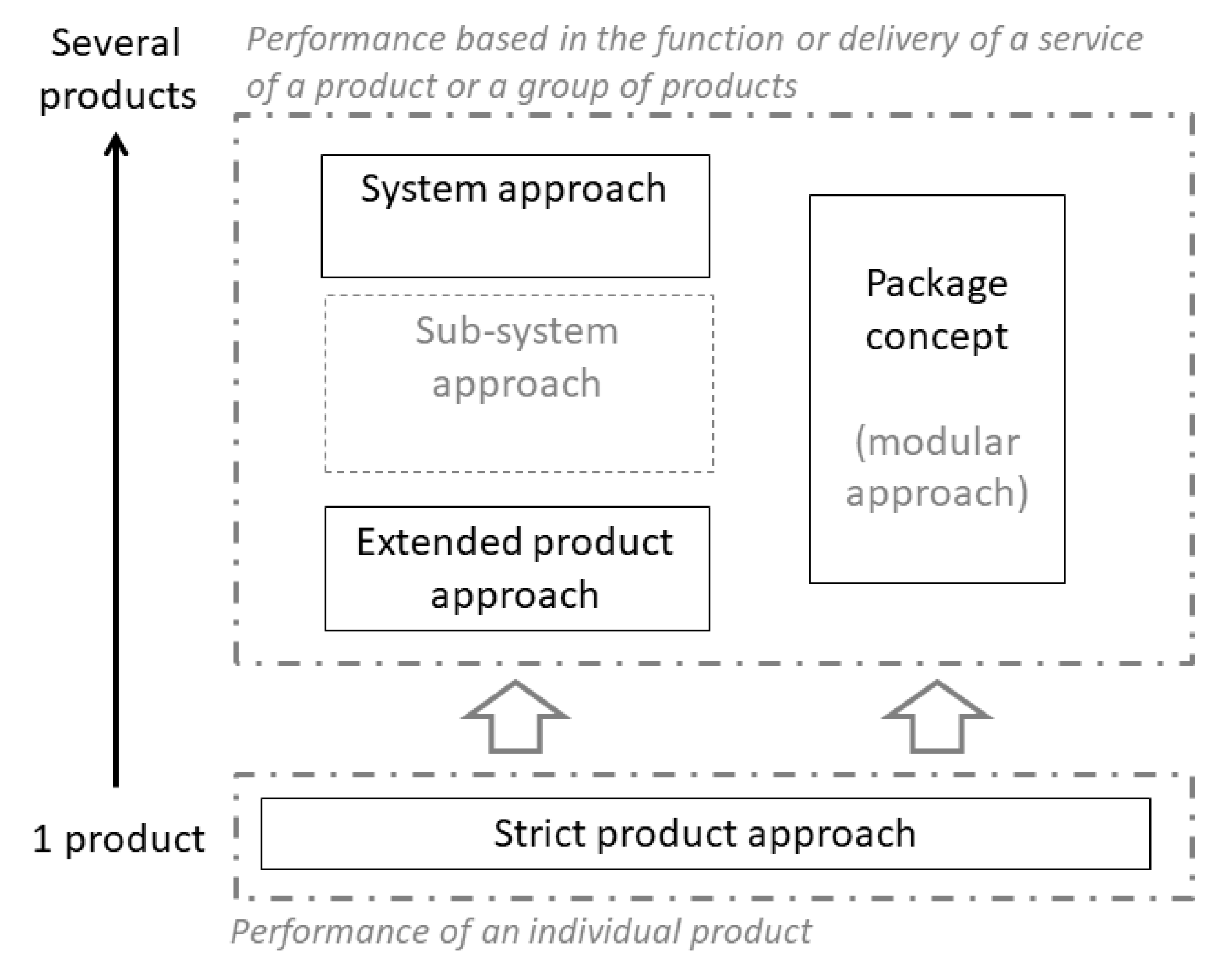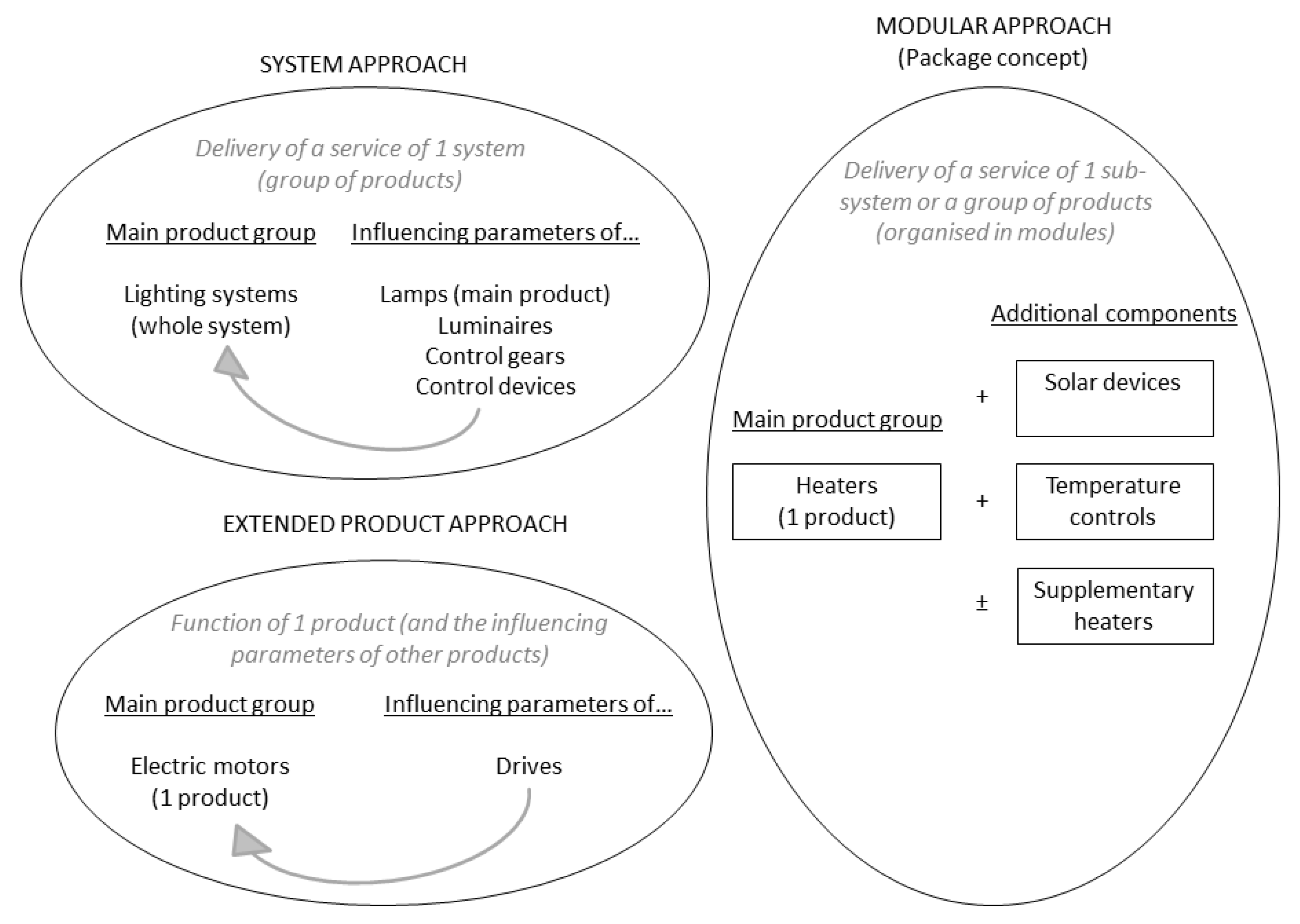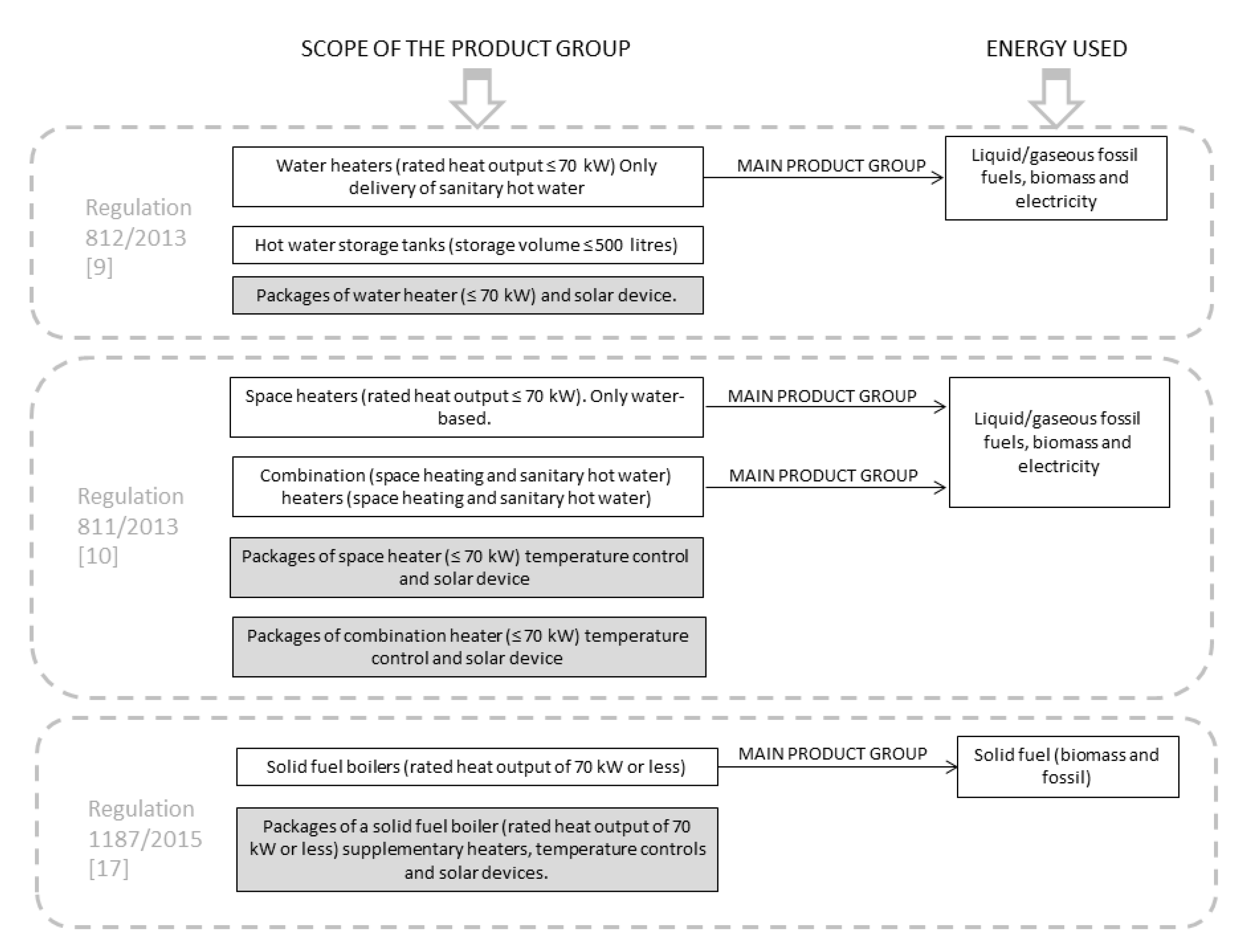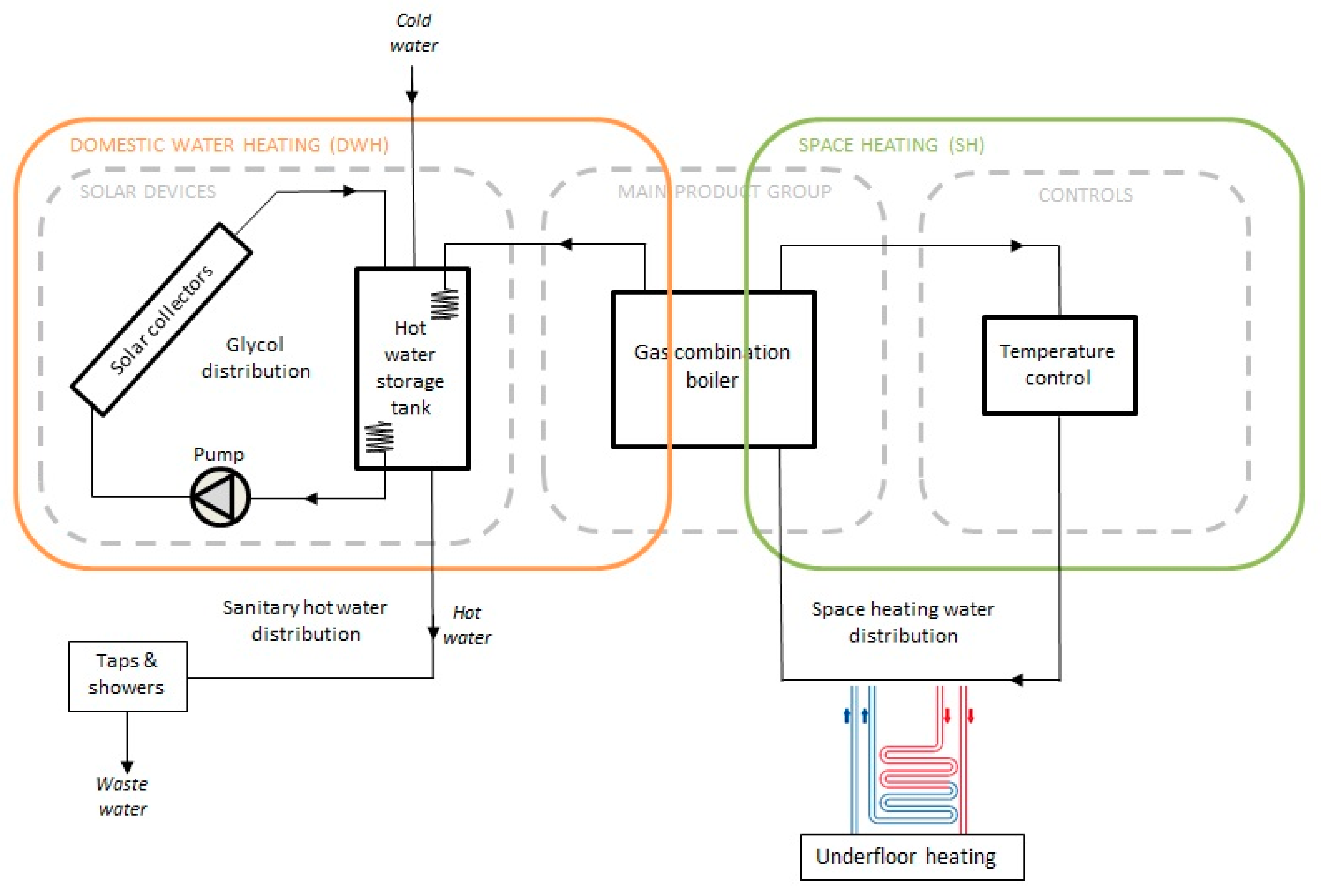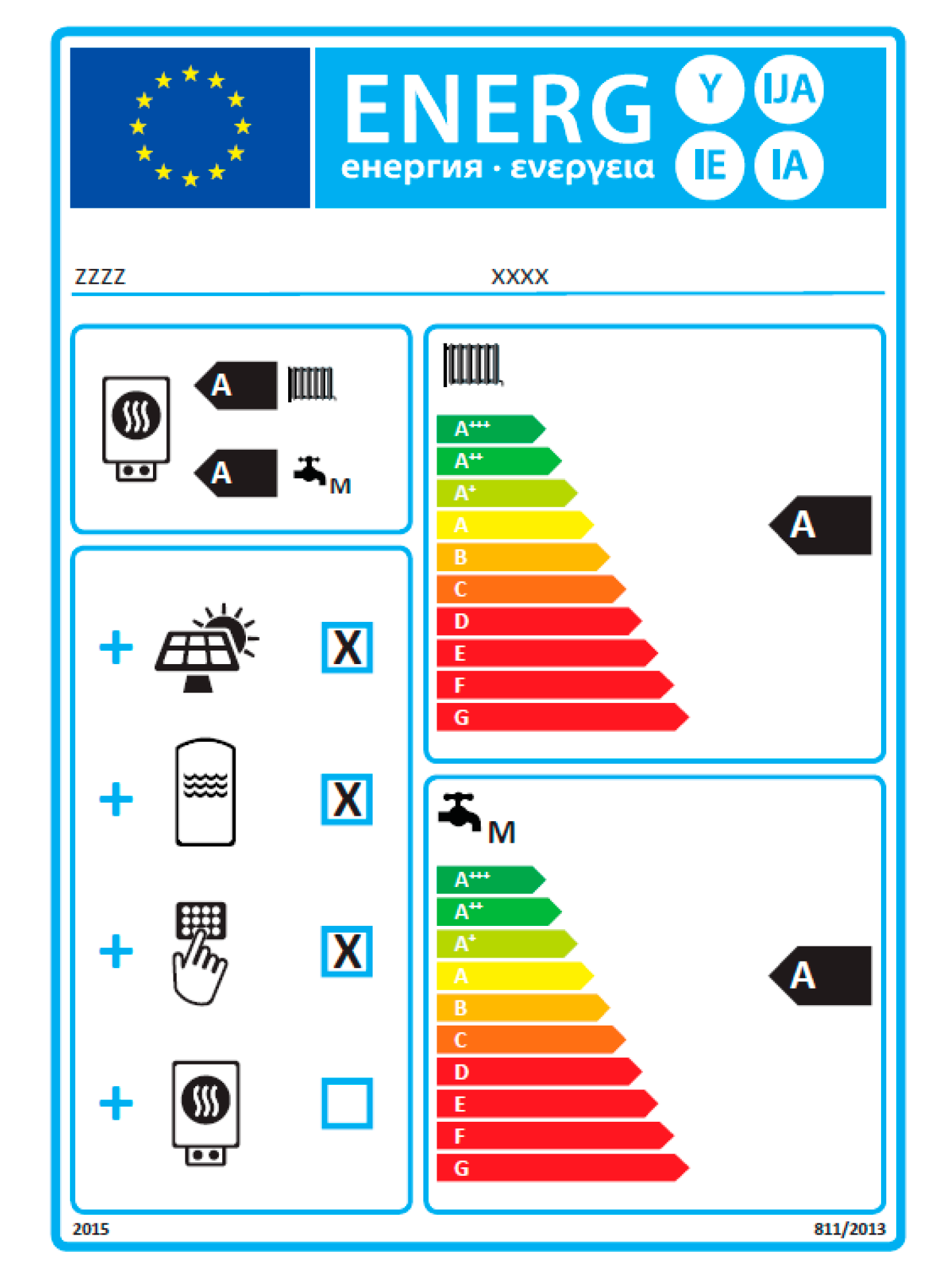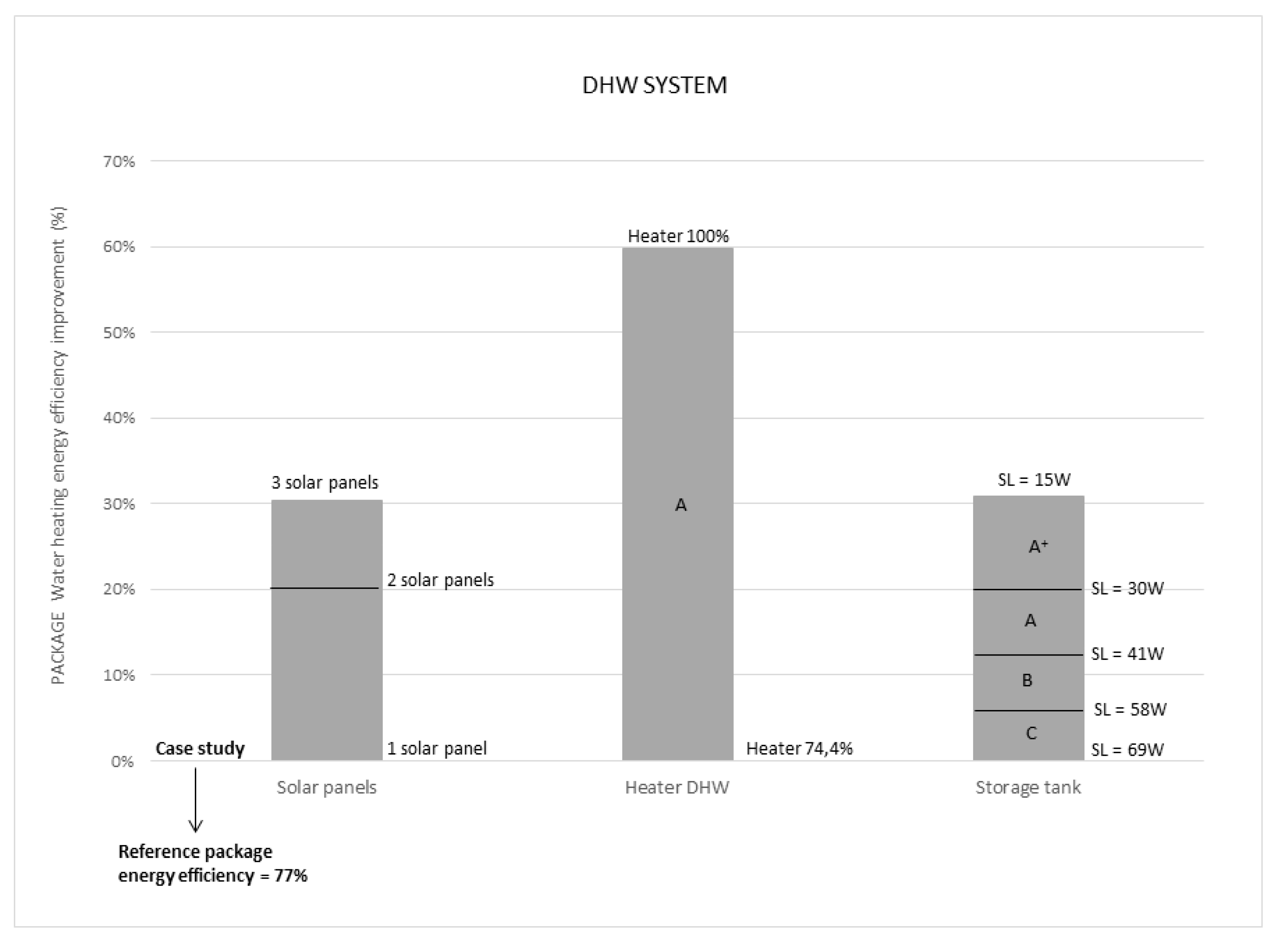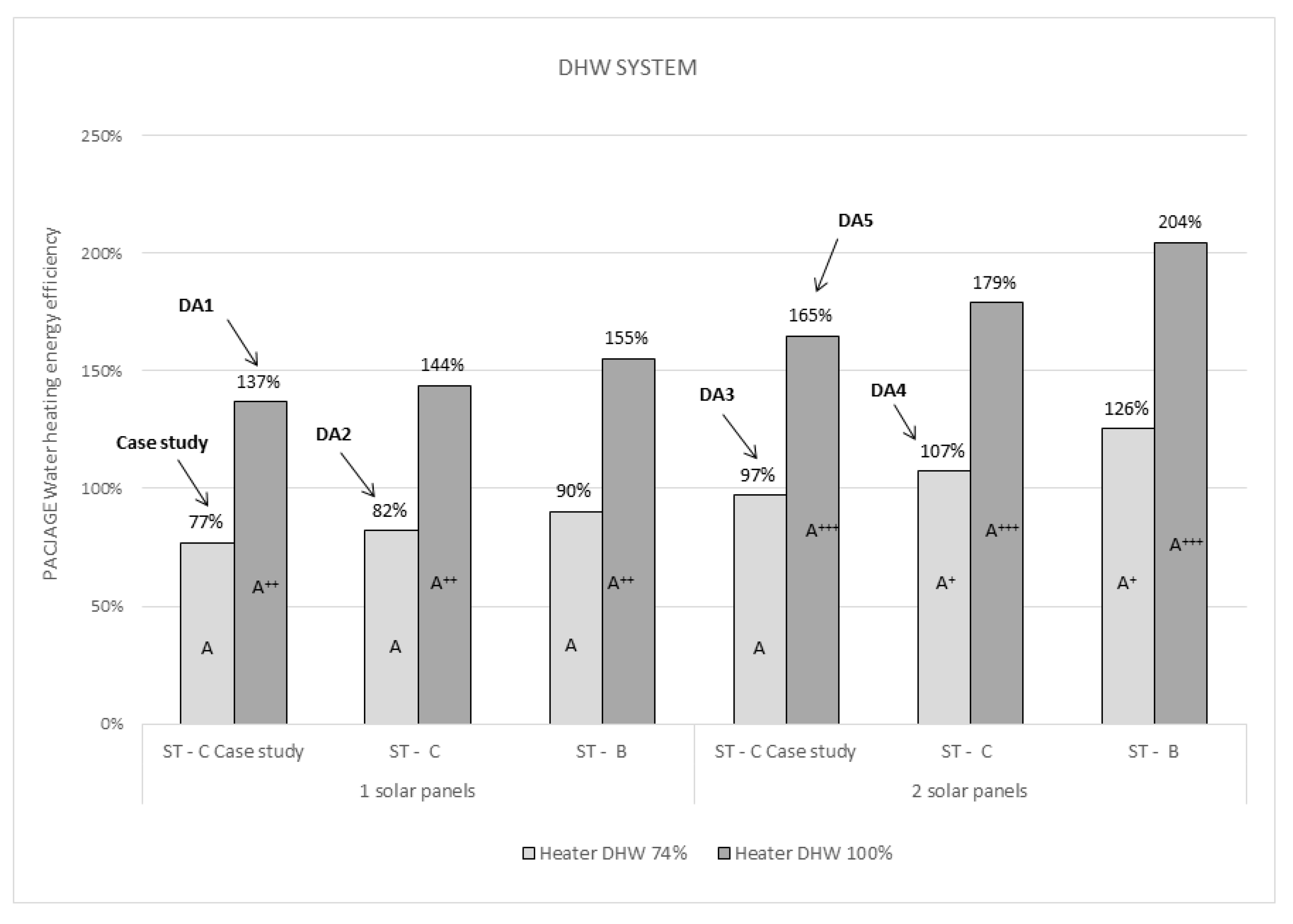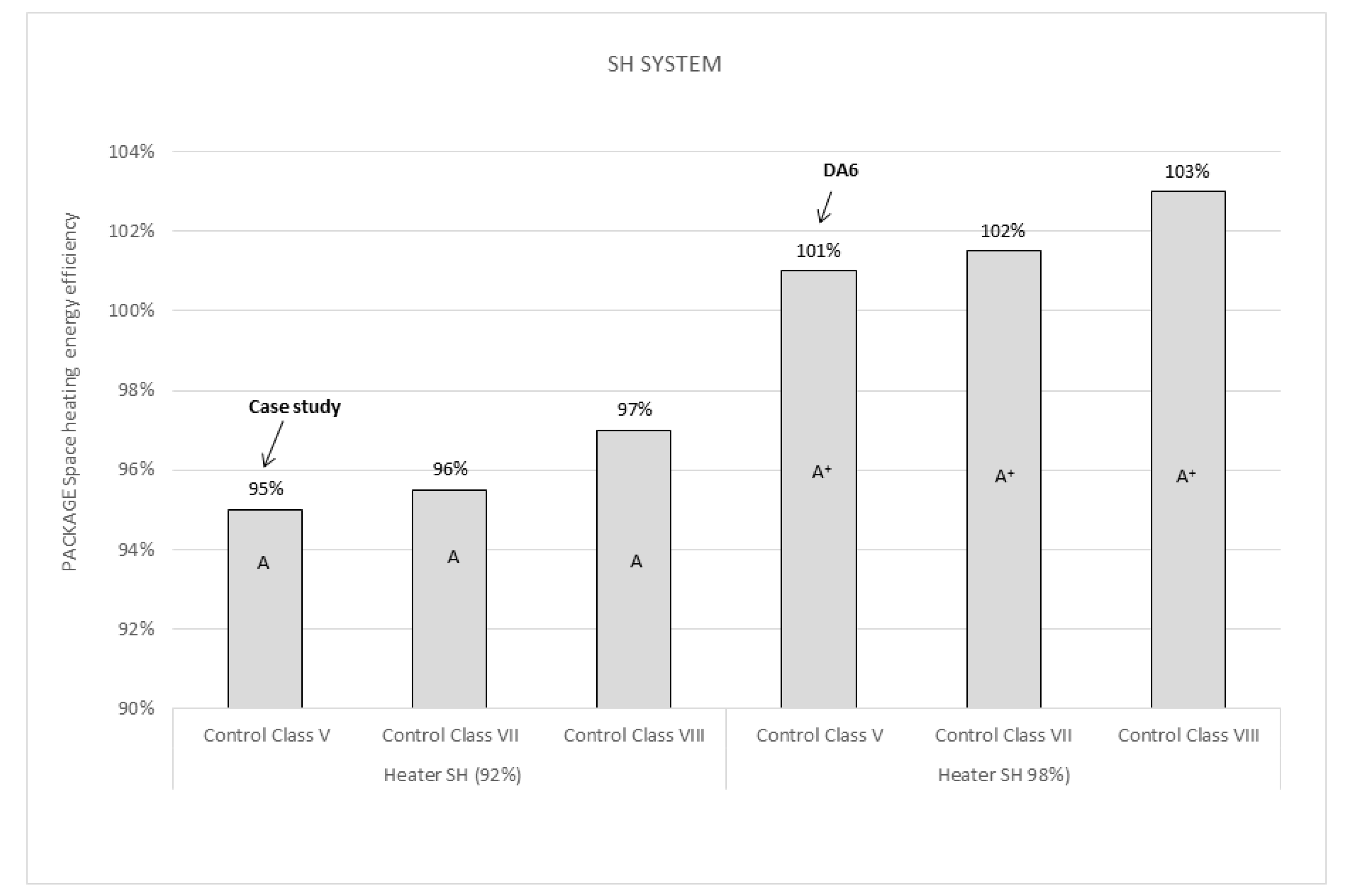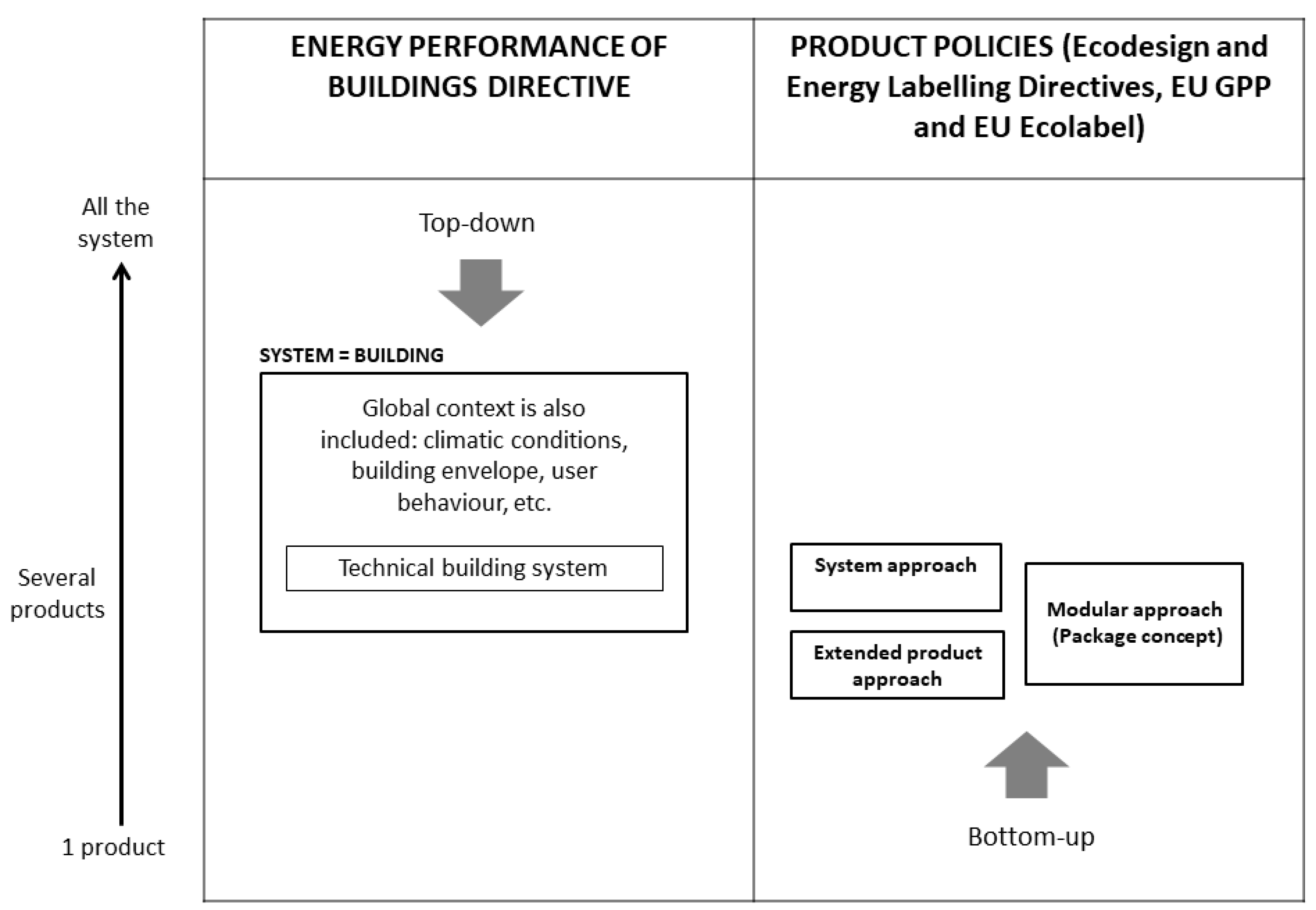1. Introduction
Different European policy instruments with the goal of reducing energy consumption in the building sector coexist. While macro-policies, such as the Energy Efficiency Directive or the Energy Performance of Buildings Directive (EPBD) set global (by country, by sector, etc.) energy targets, micro-policies, such as the Ecodesign Directive or the Energy Labelling Directive, set specific energy targets (by product groups).
At the macro level, the Roadmap to a Resource Efficient Europe mentions that improved construction and use of buildings in the European Union (EU) would influence 42% of our final energy consumption [
1]. Improvements in the energy efficiency of buildings could contribute to the 80–95% target of reducing greenhouse gas (GHG) emissions by 2050 compared with 1990 [
2]. Heating and cooling are the EU’s biggest energy-consuming sectors, representing 50% (546 Mtoe) of final energy consumption in 2012, and much of it is wasted through insufficient insulation or inefficient equipment in buildings, among other causes [
3]. The implementation of the EPBD promotes energy efficiency by reducing the energy used to maintain indoor environmental quality through heating and cooling, ventilation, lighting and operating appliances, and by the use of renewable energy in buildings [
4]. The EPBD requires Member States to set minimum requirements with respect to overall energy performance on the proper installation, equipment size, adjustment and control of new, replacement and upgraded technical building systems.
At the micro level, European sustainable product policies, such as the Ecodesign and Energy Labelling Directives, EU Green Public Procurement and the EU Ecolabel have the common goal of making the European market more sustainable [
5]. Indeed, they have been very successful in improving the energy efficiency of energy-using products such as electric motors, washing machines, refrigerators or dishwashers. The Ecodesign and Energy Labelling Directives’ requirements for space and water heaters are expected to bring annual energy savings of 600 TWh and reduce CO
2 emissions by 135 million tonnes by 2030 [
3]. These product policies initially addressed individual products, adopting a strict product approach. However, the importance of considering additional products or components that significantly influence total energy efficiency was soon realised. In fact, there is great energy-saving potential when the focus is at a higher level, rather than only on regulating individual products.
Ecodesign Regulation 640/2009 regarding electric motors [
6] was the first EU product policy to apply an extended product approach, which consists of extending the system boundaries to include other products (e.g., drives for a motor) that influence the performance of the product under study (e.g., the overall energy efficiency of the electric motors). Recently, a system approach has also been applied to electric motors used in ventilation units (e.g., Ecodesign Regulation 1253/2014 in ventilation units [
7]), which considers all or some of the components (motor, drive, casing, ducts, controls, etc.) needed to deliver a service. Similarly, product polices on lighting [
8] have also implemented a system approach.
Therefore, EU product policies have been broadening the scope of their target product groups from a product approach to a more system approach. The product approach calculates the energy performance of one product (included in a product group), while the extended product approach calculates the performance of one product (included in a main product group) based on its function and could include the influence of other products. In contrast, the system approach calculates the performance of a system that delivers a service, and this system is considered to be the product group itself. Recently, energy labelling of water and space heating systems (e.g., Regulations 812/2013 [
9] and 811/2013 [
10]) have introduced and implemented the package label, which includes the energy efficiency of a group of certain heating components (water/space heaters and solar device and/or temperature control). This paper focuses on this package concept, in particular on heating systems, and the way it calculates the package energy efficiency which is different from the extended product and system approaches. This package concept is useful for designers, since it allows them to choose the product performance that will make up the legal package label.
The design of efficient heating systems is a huge challenge, since buildings are complex systems, composed of many and very heterogeneous components, materials and devices that interact with each other, the outside environment and their users [
11]. Indeed, the decisions made in the building design phase [
12], and in particular on the components chosen for the system, are crucial to avoid major environmental impacts. System designers need to satisfy heating demands, calculate heat loads and achieve system optimisation that will allow performances to be predicted [
13]. Many engineering methods have been developed for the system level [
14]. In this regard, EU product policies could be useful to design efficient heating systems [
15]. Nevertheless, the way in which product policies calculates the energy efficiency and the real energy performance of the whole heating system can vary greatly. There is still a technological gap between building designers and regulators that needs to be filled to ensure the achievement of overall energy efficiency objectives [
16].
This paper presents a systematic analysis of different system approaches of various policies, taking an engineering perspective. The aim of the paper is to investigate how the package concept of EU product policies helps in estimating the system performance and supports the design work. It considers the example of the package concept in heating systems in buildings as the main basis of the investigation. The paper also discusses the challenges for European environmental policies to align macro- and micro-level policies more closely.
The method followed in carrying out this research work had two steps. Firstly, the package concept was analysed theoretically through examination of relevant EU Regulations and then analysed with regard to the product, extended product and system approaches. Secondly, the package concept was applied to a real case study, which includes water and space heating systems. The analysis of the case study represents how data from product policies can be useful in a design context. This second step therefore contributes to the analysis of the package concept from a practical point of view and it brings some points of discussion (advantages, limitations and improvement potential) regarding the methodology used by the package concept.
The paper is presented in five sections.
Section 1 describes the background and introduces the product, extended product and system approaches, and the package concept of the EU product policies.
Section 2 includes the theoretical analysis of the package concept and its calculation methods, in particular those for heating systems in Regulations 812/2013 [
9], 811/2013 [
10] and 1187/2015 [
17].
Section 3 analyses the practical application of the package concept in a real case study, which includes water heating and space heating systems. Lessons learnt from the case study and the advantages and limitations of the package concept are discussed in
Section 4. Finally, the paper concludes in
Section 5.
3. Application of the Package Concept to a Real Case Study
This section presents how the package energy efficiency and class is calculated for a real domestic hot water (DHW) system, including solar devices and a space heating (SH) system for a 60 m
2 dwelling. Both systems have the same gas boiler (
Figure 5). In the DHW system, the boiler is a backup of the solar sub-system, whereas in the space heating system, it provides all the hot water needed for the space heating.
The DHW system consists of the water heater, a solar collector with a glycol pump, a sanitary water pipe network, a storage tank with two coils, three taps and one shower. The SH system includes mainly the boiler, the distribution components, the underfloor heating and the temperature controls.
Table 3 shows the EU regulations that affect the products and packages described in the case study. The package and label are composed of a combination heater with solar devices and a temperature control, according to Regulation 811/2013. Two different calculation schemes are used to calculate the water heating energy efficiency and the space heating energy efficiency of each of the functions of the heating systems (
Table 3). However, because the house had been completely refurbished in 2012, that is, before the regulation entered into force (September 2015), the labelling of the package was not available when the installation took place. In this section, the package energy efficiency is calculated and the energy class set for both DHW and SH systems (in
Table 3) using data available from the installed products.
Table 4 shows the technical parameters, provided by manufacturers of the devices, needed to calculate the package water heating energy efficiency of the DHW system and the package space heating energy efficiency of the SH system in the case study.
According to Regulation 811/2013 [
10], combination heaters have two different energy efficiencies, one for each of their functions. The manufacturer declared that the combination boiler in this case had an energy label A for the DHW and space heating systems. The water heating function of the boiler had a load profile M, according to tapping patterns described in Regulation 811/2013 [
10] for combination water heaters (relevant for Q
ref). The storage tank had an energy label C, according to Regulation 811/2013 [
10].
According to Regulation 811/2013, for the calculation of the water heating energy efficiency, additional intermediate parameters are needed (
Table 5). The Q
nonsol and Q
aux have been calculated with SOLCAL [
22]. SOLCAL is free software available online, which is recommended by European Commission [
23] for calculating the non-solar energy needed in the package and includes several technical parameters for the solar devices.
Table 6 shows the results for the water heating energy efficiency and class of the DHW system and the seasonal space heating energy efficiency and class of the SH system in the case study, when implementing the calculation scheme from
Figure 5 of Regulation 811/2013.
Figure 6 shows the resulting package label for the case study. The main product group (the combination boiler) and the additional components (solar collector, storage tank, temperature control and supplementary heater) are shown on the left and the efficiency classes for each of the functions are shown on the right of the label.
3.1. Analysis of the Improvement Potential of the Package When Upgrading the Products
This section shows how data from product policies could be used by building designers to produce better design alternatives (DAs). Building engineers, who are responsible for heating system design, could make different product choices based on the different performance levels of the products. Further analysis of the case study reveals how upgrading each product (which can be proposed by building designers) can affect the package energy efficiency.
Therefore, the performance levels of each product have been assessed. Firstly, the influence of each individual product (without modifying the other products) on the potential improvement of the packages is analysed. Secondly, different DAs are presented according to the combination of the improved performance levels of one, two and three products.
In the DHW system, the heater already has the highest energy class, class A, but its water heating energy efficiency could be increased to 100% by choosing a better boiler [
10]. In theory, the heater could achieve energy classes that are higher than class A, but only in packages of boilers with solar devices and temperature controls [
10]. However, in this analysis, we consider the improvement of only one component (considering the boiler and solar devices separately) to calculate the package efficiency; therefore, we disregard energy classes higher than class A. Therefore, two heaters are considered (with efficiencies of 74.4% and 100%). One solar collector (2.06 m
2), two collectors (4.12 m
2) and three collectors (6.24 m
2) with the same characteristics are considered. The highest possible energy class of the solar storage tank is class A
+ with no standing losses (SL = 0 W); however, in this analysis, we consider only tanks with minimum standing losses (SL) of 15 W, which is closer to reality. Therefore, five storage tanks are considered, one for each performance level based on their standing losses; C of the case study (SL = 69 W), C maximum (SL = 58 W), B (SL = 41 W), A (SL = 30 W) and A
+ (SL = 15 W). In this analysis, the solar collectors and the solar storage tank have been considered as two separate products to distinguish their individual influences, although Regulation 811/2013 considers them together in calculating the solar contribution.
Figure 7 shows the influence of each product on the improvement of the overall water heating energy efficiency of the package.
Figure 8 presents the package water heating energy efficiency values of the combinations of the performance levels of one, two and three products, showing the easiest and most realistic DAs.
The case study gave a package water heating energy efficiency of 77% (
Table 6), which is the reference line. The heater or boiler alone had the highest improvement potential (60%) for the package, which could reach 137% (DA1 in
Figure 8) of package energy efficiency. A storage tank with an energy class A
+ (SL = 15 W) could increase the package energy efficiency to 108%. Storage tanks with energy class C maximum (SL = 58 W) would improve the package energy efficiency to 82% (DA2 in
Figure 8). Installing three solar collectors (6.24 m
2) would improve the package energy efficiency by 30% (107% package energy efficiency). Using two solar collectors instead of one would increase the energy efficiency of the package to 97% (D2 in
Figure 8).
However, storage tanks of class A or above would require innovative solution technologies, such as evacuated systems or aerogels, and the installation of three solar collectors might not be justified in such a small house (60 m
2). Therefore, to simplify the figures, the unrealistic storage classes A and A
+ and the option of three solar collectors are not assessed in the analysis of better DAs (
Figure 8).
Figure 8 shows results of combining the improvements resulting from different package products (the heater, the storage tank and the solar collectors) under the same assumptions as in
Figure 7 to select a new design that could upgrade the package water heating energy class to better than class A. Five DAs are proposed when upgrading one product or the combination of two products in the system. Firstly, to achieve a package energy class A
+, a storage tank in energy class C with SL = 58 W and two solar collectors would have to be used (DA4). Secondly, a package energy class A
++ could be achieved using a heater with 100% water heating energy efficiency (DA1). The highest package energy class A
+++ could be achieved using two solar collectors or panels and a heater with 100% water heating energy efficiency (DA5).
Regarding the seasonal space heating energy efficiency of the package,
Figure 9 shows the results of the analysis for the system when upgrading the performance of either the heater or the temperature controls. Two heaters have been considered, with 92% and 98% space heating energy efficiencies. The former is the one used in the current design of the case study and the latter corresponds to an EU Ecolabel [
24]. Three temperature control classes have been considered: control class V (the one used in the case study, which is a modulating room thermostat for use with modulating heaters), class VI (a weather compensator and room sensor for use with modulating heaters) and class VIII (a multi-sensor room temperature control for use with modulating heaters), which contribute 3%, 4% and 5%, respectively, to the seasonal space heating energy efficiency of packages (temperature control class VII is not included in this analysis, since the heater in the case study is a modulating boiler and this class is for use with on/off output heaters [
21]).
The heater or boiler has a greater influence on the package efficiency than the temperature controls (
Figure 9). By improving the space heating energy efficiency of the heater from 92% to 98%, the package would increase its efficiency from 95% (package energy class A) to 101% (DA6; package energy class A
+). Improving the temperature controls to those in the highest class increases the package efficiency only to 97%. However, controls in class VIII, which use multiple sensors, might not be appropriate for a 60 m
2 dwelling.
Table 7 presents the summary of results for the different DAs proposed in this analysis. In principle, the easiest way to improve the energy efficiency of the package would be to modify only one product (DA1, DA2, DA3 and DA6). However, DA2 and DA3 do not improve the package energy class, which remains class A. DA4 and DA5 require the modification of two products, although they achieve a higher package energy class (classes A
+ and A
++). The space heating energy efficiency has very limited potential for improvement. We propose only DA6, which requires the space heating energy efficiency of the boiler to be upgraded and results in the package achieving slightly higher energy efficiency (101%) and becoming class A
+.
5. Conclusions
This paper presents an analysis of some EU product policies, in particular examining how they address the energy efficiency of complex systems that contain several products. A particular focus is on the package concept, which is a modular approach between the extended product and the system approaches (
Figure 1). The package concept has so far been applied only to heating systems, in particular through Regulations 811/2013, 812/2013 and 1187/2015 (
Section 2). The calculation method of the package energy efficiency is straightforward to apply; therefore, it can be implemented easily by manufacturers and dealers and understood easily by consumers. It is more flexible than the formulae used in the extended product or system approaches because it allows new components’ efficiencies to be added easily to the efficiency of the main product group. Then, although design of efficient heating systems is complex and require advanced modelling skills, designers of systems could benefit greatly for having access to such simple assessment methods at early stage of the design. However, it has some limitations regarding missing components that are part of heating systems (e.g., distribution and delivery components) and regarding insufficient consideration of the interactions between components. The real efficiency of a system is not the simple sum of the efficiencies of its components. In addition, dimensioning of products according to the size and characteristics of the building and the geographical and climatic conditions are not considered in the analysis of the package energy efficiency.
The package concept was implemented in a real case study that includes a water heating solar system and a space heating system (
Section 3). The package energy efficiency and class (see results from
Table 6), and label (
Figure 6) was calculated using a step-by-step process for these systems. In addition, based on the case study, further package analyses relevant for designers were carried out on the potential to improve the packages if the products are upgraded. In particular, six design alternatives are presented in
Section 3.1 (see
Figure 7 and
Figure 8) in which the package energy efficiency and/or class are improved when the boiler, the storage tank are upgraded or when more solar panels are added. These analyses showed the potential of using product policies to support technical decisions in the system design phase. This brings building engineers and regulators closer together regarding the use of more consistent data on energy performance.
The package concept of heating systems and the EPBD are complementary, but the latter considers the building itself as the system for the purpose of analysis (
Figure 10). It is still an open question where systems based on modular approaches of building-related product policies end and where the technical building systems defined in the EPBD begin. In this regard, a common policy development would be needed to address equivalent terminology and the boundaries of systems.
To improve the calculation method of the energy efficiency of packages, we propose the use of benchmarks and the further development of standardisation methods. In addition better alignment of building-related product policies with EPBD would lead to overcome limitations such as better considering additional components, the building characteristics and envelope, or the climate conditions. In addition, further research is needed to develop calculation methods that are better aligned to each of these policies applied to the energy efficiency of systems.
